Chutaro lives on Majuro Atoll in the Marshall Islands and needs a boat that will do a wide variety of things very well: carry his young family of five around the coral-studded lagoon, sit upright on a sandy beach, drift reef flats while fishing, navigate breaking waves, and ferry people and supplies across open ocean to distant atolls. For over 20 years, Ben’s do-it-all boat has been a 16 Montauk—a Boston Whaler that was built in 1974 and is 16′ 7″ long with a 6′ 2″ beam and a 9″ draft and powered by a 90-hp Honda outboard.
In addition to frequent trips in his 16 Montauk inside and offshore of Majuro Atoll, Ben has made scores of safe passages to outlying atolls. I’ve had the good fortune to join him on many of those trips including perhaps two dozen open-ocean passages ranging from 20 miles to well over 60 miles. For our most recent trip in September 2023, Ben added a slightly larger 17 Montauk to his fleet. Built in 2004, it is 17′ long with a 7′ beam and a 9″ draft.
By the time Boston Whaler built the first-generation 16 Montauk in 1973, the boat already had a distinguished pedigree. The design was a collaboration between Dick Fisher and his friend, Ray Hunt. Fisher was a Harvard philosophy grad who ran a small business near Boston, but he tinkered with novel small-boat designs and new fabrication materials and methods. Hunt was a prep-school dropout, champion sailor, and self-taught naval architect who would go on to find fame as a designer of fine motor and sailing yachts.
Their first product was the original 13′ Boston Whaler, which launched the company in 1956. That first boat incorporated three fundamental innovations of hull design and fabrication that were subsequently carried over, virtually unchanged, to the 16 Montauk. The most distinctive innovation was the cathedral hull that placed a pair of longitudinal runners or sponsons in the forward section of the hull on either side of a narrow and moderately V-shaped central hull—a configuration that required the wide hull that came to characterize the Montauk line. In the aft section of the hull, the sponsons and the central V gradually merge to form a generally flat surface for planing.
The cathedral hull remains an important part of the Whaler mystique today, but the company gradually phased it out in the Montauk line in favor of a moderate V-shaped hull that would provide customers a drier and more cushioned ride. Today all new Montauks have moderate V-shaped hulls forward with only vestigial sponsons that seem intended only to deflect spray and to maintain a visual connection with the Montauk heritage.
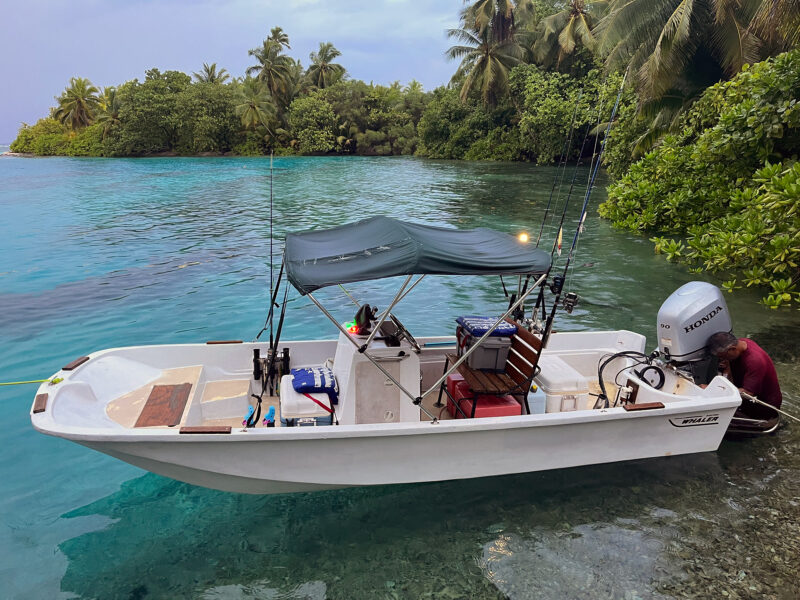 Photographs by the author
Photographs by the authorThe first-generation 16 Montauk was essentially an enlarged version of the original 13′ Boston Whaler. Indeed, the Montauk maintained the distinctive Boston Whaler cathedral hull, the injected polyurethane foam between the inner and outer hull skins, and the self-drain cockpit and low freeboard. New to the Montauk was the substantial center console.
The second and perhaps most significant innovation was the polyurethane-foam core injected between the molded fiberglass interior and exterior. This revolutionary approach allowed the new company to mass-produce affordable boats that were strong, lightweight, durable, and unsinkable. Called Unibond construction, it remains a central feature of all Boston Whaler boats today.
The third innovation involved an elevated self-draining cockpit sole and a low freeboard to limit the volume of water that could accumulate inside the boat if swamped. Together with the buoyancy of the foam core, the result was a boat that would float even if full of water and weighed down by an outboard motor, passengers, and gear.
The boat and the company took off in 1961 when Dick Fisher appeared in a series of marketing photos in Life magazine and elsewhere that featured him, sporting a bow tie and Harvard tweeds, in the stern of a 13′ Whaler as a saw cut the boat in half. Fisher then motored back to the dock in the aft section of the boat while towing the bow section.
Boston Whaler began offering a 16′ 7″ hull in 1961, and the company soon rolled out diverse models and marketing plans targeting every possible use from yacht tenders to bass boats to Coast Guard boats patrolling the Mekong River of Vietnam. In 1973 the company distilled what had become a dizzying scramble of 16′ 7″ models to focus on what they called the 16 Montauk.
In 1976 Boston Whaler modified the 16 Montauk hull shape within the same overall dimensions and changed the name to 17 Montauk. Bob Dougherty designed the new hull to moderate the extremes of the early cathedral hull—reducing the sponsons and moving them inward slightly, increasing the width and depth of the central V in the forward section, and flattening the aft section a bit more. The narrowed sponsons were carried upward and inward as “reverse chines” to meet smoothly in the center. This created a wraparound bow chine that helps deflect spray and gives the bow an expressive lip that Boston Whaler calls a “smirk.” The 17 Montauk increased the finished hull weight from 750 to 900 lbs but kept the minimum and maximum outboard ratings at 35 and 90 hp.
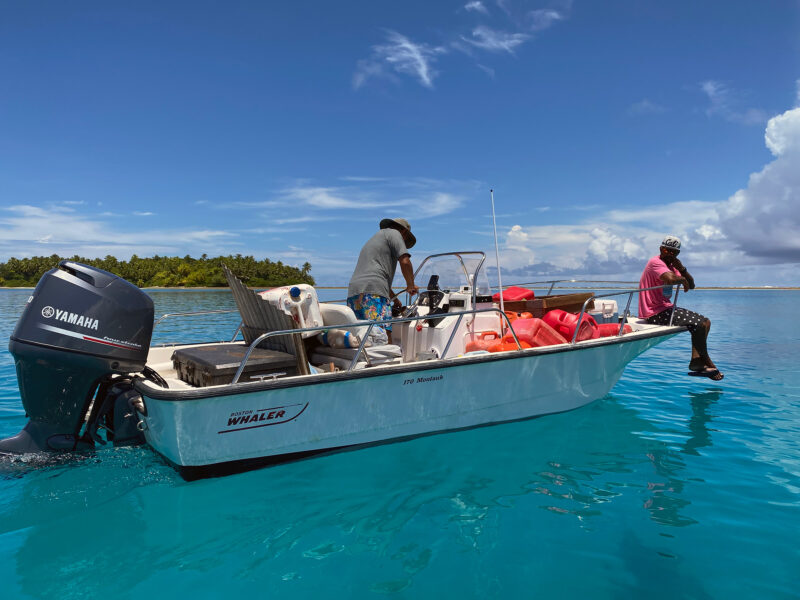
The 170 Montauk was introduced to accommodate the heavier four-stroke engines which, by the early 2000s, were rapidly overtaking two-strokes in the marine-outboard market. The new 170 model retained the general Boston Whaler appearance despite significant changes to the hull below the waterline and increased height in the freeboard.
In 1998 the 17 Montauk hull weight was increased to 950 lbs and the maximum outboard increased to 100 hp. Some of the increase is likely due to a shift in materials that started in the 1990s and has now replaced more than half of the 30-odd plywood reinforcement pieces with fiberglass-reinforced composite board. These hull reinforcement pieces are required in places where extra strength is needed and where deck and hull fittings are mounted because the foam core and fiberglass shell are not strong enough in themselves. Plywood inserts are cheaper and lighter than composite board but are susceptible to rot.
At about the same time, Boston Whaler created a Commercial and Government Products Division that offered boats with even more robust specs for special uses. These boats often become available to the public as surplus, even though the boats still have decades of good use ahead of them. Ben estimates there are between 100 and 200 Boston Whalers on Majuro Atoll, and, like his 16 Montauk, perhaps 90 percent of them are military-spec boats that people on Majuro acquired as surplus from the U.S. military base on Kwajalein Atoll.
In 2002 Boston Whaler completely redesigned the boat—increasing the length to 17′ 0″ and the beam to 6′ 10″, modifying the hull further toward a V-shape, and eliminating the smirk. The name was changed to 170 Montauk.
The larger, heavier hull of the 170 Montauk was made necessary by the rapid adoption of four-stroke engines, which are much heavier than two-strokes of the same horsepower. Additional reinforcement was also added to the transom to support a small kicker outboard alongside the primary motor. The weight of the 170 Montauk increased to 1,440 lbs, and the minimum outboard size increased to 60 hp. Improved manufacturing processes reduced labor costs so much, however, that Boston Whaler reduced the suggested retail price 25 percent compared to the 2001 boat.
In 2018 Boston Whaler again redesigned the boat and increased its size once again but retained the 170 Montauk name. The length increased to 17′ 4″, the beam to 7′ 3″, and the draft to 12″. The hull shape was modified even further toward a moderate deep-V hull—again with the goal of providing a drier and more comfortable ride—while still retaining a visual link to the past. The hull weight increased to 1,700 lbs—more than double the weight of the 16 Montauk—and the minimum and maximum outboard sizes increased to 90 and 115 hp, respectively. This is the current design.
With a 50-year production run and roughly four design generations, the approximately 17′ Montauk has been in production longer and sold more copies than any other stock boat. Following its success, Boston Whaler currently offers the Montauk in nominal lengths of 15′, 17′, 19′, and 21′.
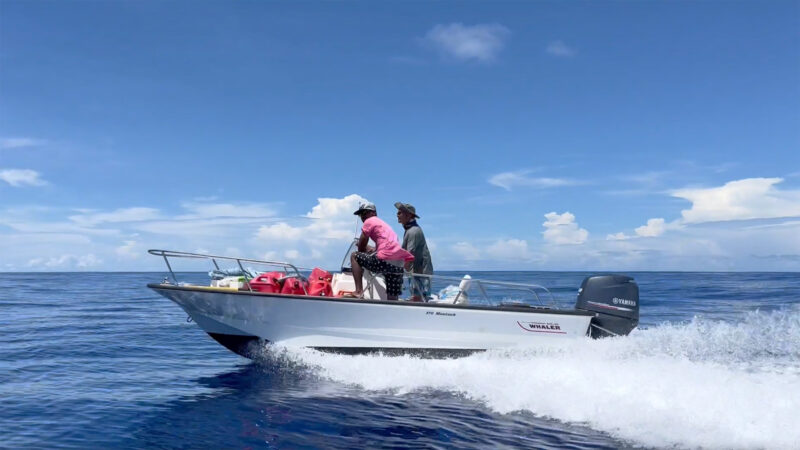
At speed the 170 Montauk is drier and smoother than the smaller, lighter 16 but, even when not fully laden, the most comfortable position for a passenger is standing alongside the helm at the center console.
Even the early Montauks were well built using high-quality materials and fittings; Ben’s 49-year-old boat is still going strong. Old boats generally require some repair and refitting, and like many other Montauk owners, Ben has done that work himself. A common task in old Montauks is to cut out and replace sections of floor where the foam core and plywood reinforcement pieces have become spongy. Cracks in the surface gelcoat and underlying fiberglass or leaks that develop over the decades around deck and hull fittings require repair and filling because water can seep through them to the interior core, eventually degrading the foam and migrating to any plywood reinforcements, which eventually rot.
Understanding what repairs to do, and how, and finding the necessary parts and diagrams and other information for an old Montauk is made easier by the large base of existing boats, OEM and aftermarket parts, official documentation, and helpful owners. A wealth of advice, parts, used boats, information, diagrams, and other resources can be found online.
Ben keeps one of his Montauks on a mooring and the other on a lift. With relatively modest V-hulls, flat stern sections, and shallow drafts, the boats are easy to get on and off the trailers, and the low freeboard makes it easy for people to get on and off the boat from a trailer or a dock or from shore. The boats are so stable that an adult can sit or stand on the broad rail without dramatically altering trim. The 16 Montauk is particularly easy to move up and down a launch ramp because of its relatively light weight—with a 90-hp outboard, fuel, water, food and gear, the boat only weighs about 1,400 lbs. Even the larger 170 Montauk can be towed and launched by a family car or SUV.
Boston Whaler says that even the 2018 design of the 170 Montauk will fit, albeit tightly, into a standard-sized single-car garage. Most new-boat dealers offer 170 Montauks with a trailer that has a swing tongue that shortens the overall length by 2′ 8″ and makes garage storage possible.
No matter which design, all Montauks can be run up or pushed directly onto a beach, where they will sit comfortably, flat and upright, and are then easily pushed back off into ankle-deep water for loading. The 16, 17, and 170 Montauks all have the same 19″ freeboard, which makes loading and unloading and getting in and out of the boats very easy.
All Montauks are center-console boats. The outboard sizes are too big to be controlled by a tiller, and the combined weight of a large outboard motor and an operator would put the boat well out of trim. Of equal importance is the Montauk’s relatively hard ride in rough water. At planing speed, the ride is usually too hard to take sitting down except in the aft section of the boat. It’s best to stand at the console for support and have your legs absorb the pounding.
Fuel for the 16 and 17 Montauks and for the 2002, 170 Montauk is stored in two plastic fuel tanks under the skipper’s seat. The 2018, 170 Montauk has an integrated 25-gallon aluminum fuel tank.
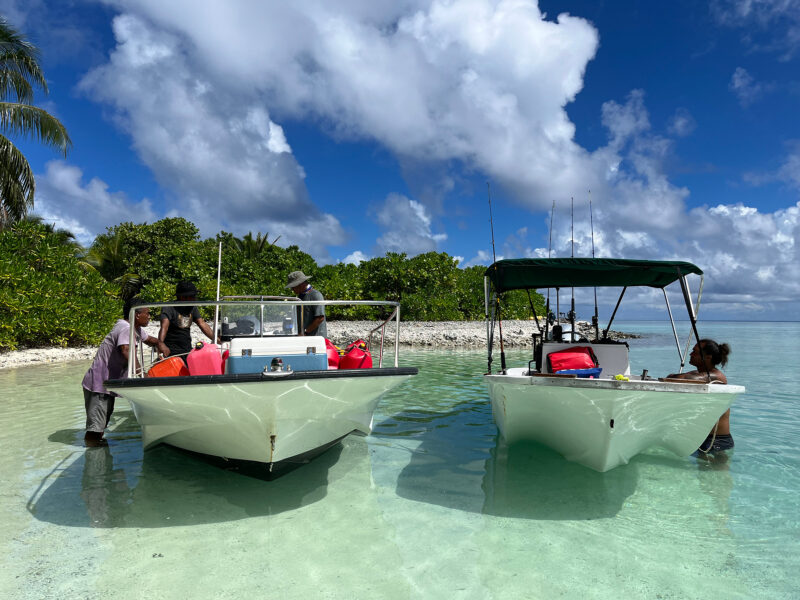
Seen side by side the difference in the hull shape between the 170 Montauk (left) and the 16 Montauk is clear. While the 170 is less than 1′ longer and only 8″ beamier (the newest 170 is an additional 5″ beamier), the 170 is significantly larger thanks to the increased freeboard and flare forward. The evolved hull shape is also obvious having moved from the archetypal cathedral hull of the 16 Montauk to the narrower sponsons and wider forward v-section of the 170.
All versions of the Montauk have dry storage space inside the center console and an integrated storage space for an anchor and anchor rode built into the bow platform and covered by a plywood hatch. The 2002 and 2018 designs of the 170 Montauk both have storage space for two plastic trays of fishing tackle built into the starboard side of the console. Additional storage space and seating can be provided by strapping a cooler or heavy plastic storage box in front of the console and/or behind the captain’s bench. A big storage box placed aft of the captain’s bench doubles nicely as a seat for fighting big fish. The current 170 Montauk design has an optional cooler with cushions mounted forward of the console as additional seating.
The flat, open floor of the Montauk is ideal for stowing additional fuel, stores, and gear. On our recent three-week fishing expedition, both the 16 Montauk and the 170 Montauk were crammed with hundreds of pounds of fuel, stores, and gear—all carefully positioned and tied down. Once that cargo was removed, the flat, open cockpit floor and the bow platform made excellent casting platforms—one in the bow and one in the stern.
The Montauk’s hull is relatively short compared to its beam, and its aft section is nearly flat. The waterline length of the 16 Montauk is just a bit over 14′, and at planing speed it tends to bounce and pound a bit over short, choppy waves. The hull can come down hard, and any passenger not in the stern will likely be standing by the console with a firm hold on the grip rail.
An ocean passage in the 16 Montauk becomes tiring after a couple of hours even in only moderately rough conditions, but we have endured passages longer than eight hours when we were slowed by a brisk headwind and steep swells. In such conditions, Ben constantly works the throttle to manage the boat’s speed—getting up to plane whenever possible but backing down quickly when the boat begins to pound or heads into a big wave.
The ride in the 170 Montauk is noticeably softer and drier than in the 16 Montauk. Motoring at about 20 knots on our four-hour outbound passage, with a 10-knot wind and 1′ waves over confused 3′ swells coming onto the port bow, Ben and I only caught occasional spray in the 170 Montauk while Kimi Takiah and my son, Paki, were frequently hit with spray in the 16 Montauk. We expect the newer 170 Montauk design to be even more comfortable, but we don’t have direct experience on that boat.
Both the 16 Montauk and the 170 Montauk have very good lateral stability at all speeds and sea conditions. Both track and steer easily at all speeds—even when creeping slowly over shallow reefs with the outboard tilted up so just the bottom half of the prop is in the water. In that mode, both boats can operate safely in 1′ 9″ of water with only the outboard’s skeg and prop at risk. When necessary, we can tilt the motor all the way up and get out and walk the boat through water no more than 1′ deep.
Both boats readily rise to plane at about 3,000 rpm when lightly loaded and with only a light chop on the water. The 16 Montauk rises a bit more quickly—likely due to its significantly lighter weight—but the 16 Montauk was driven by a Honda 90-hp with a loading prop and the 170 Montauk was driven by a Yamaha 100-hp with a standard prop. Both boats run smoothly on a plane at about 20 mph as measured by GPS. The 170 Montauk runs at 22 mph at 3,300 rpm and at 37 mph at 4,600 rpm. We didn’t test it at higher rpm.
On the three-hour return passage, the 170 Montauk carried two people, 15 gallons of gas, 5 gallons of water, food, and gear. With a light breeze on the quarter and 3′ swells, the 16 Montauk planed at 22 mph at 4,200 rpm and 23 mph at 4,300 rpm. On that passage, the 170 Montauk averaged about 4.5 mpg; the 16 Montauk is more fuel efficient, averaging about 0.5 mpg better than the 170 Montauk. Two weeks later, Ben and Kimi made the same return passage on the 170 Montauk in much heavier weather with rough seas and crossing winds up to 20 knots; the 170 Montauk averaged only 3.0 mpg because the seas were too rough to maintain planing speed consistently.
In common with other planing hulls, neither Ben’s 16 Montauk nor his 170 Montauk can maintain a speed that is just below the boat’s planing speed. Both boats will generally plane at around 20 mph and 3,000 rpms when lightly loaded, but reducing the rpms to 2,800 does not decrease the speed proportionally. Instead, the boat goes off plane and slows to 12 or 14 mph because it no longer has the power to climb the bow wave. Revving up to 3,000 rpm or so again puts the boat back on plane and increases the speed from 12 or 14 mph all the way to 20 mph. It is not possible to speed up a little bit when running just below planing speed or to slow down a little bit when running right at planing speed. Running too slow and climbing the bow wave wastes time and fuel, but running too fast on a plane in a stiff chop or heavier seas can quickly get very rough and wet. The solution is to work the throttle constantly.
The 16 Montauk is light and nimble: easy to handle under power, easy to maneuver and to back down, and easy to manhandle whether at a dock, a ramp, or a beach. When the 16 Montauk became stranded on a beach during an overnight camping trip, Ben, Paki, and I were able to push the boat across coconut-frond skids off the beach and then 75 yards until we reached deeper water. Another advantage of an old, used 16 Montauk is that it might be acquired and refit inexpensively. Ben’s was already 30 years old and in need of TLC when he got it, and his DIY repairs and salvaged accessories don’t look out of place. We both like the boat.
Ben got the 170 Montauk this September mainly because it provides a softer and drier ride than his 16 Montauk. After 20 years, he was tired of the pounding on long ocean passages. I was, too. The other advantage of the 170 Montauk is that it is larger and roomier, so it provides more space for people and cargo and a larger platform for casting. Three people is a bit of a crowd when fishing from the 16 Montauk but not from the 170 Montauk.
Ben’s old 16 Montauk and his newer 170 Montauk represent the first and third generations, respectively, of the 17′ boat in Boston Whaler’s Montauk line. Both are well built, stable, stylish, and durable. Many thousands of owners use the boats as yacht tenders and for family excursions, water-skiing, and fishing inshore flats and ocean depths. A few, like Ben, use the boats to carry people and gear on long ocean passages. Military and law-enforcement personnel even use them as patrol boats. Both boats perform well over a wide range of activities, with the 16 Montauk excelling most at being light, nimble, and maneuverable, and the bigger, heavier 170 Montauk providing a roomier interior and a drier, more comfortable ride. And, in keeping with the Boston Whaler traditions, both are unsinkable.![]()
Tim O’Meara grew up sailing and otherwise mucking about in small wooden boats on Lake Okoboji in northern Iowa during the 1950s and ’60s. In college he was fortunate to sail 30′ sloops on San Francisco Bay as a junior member of a club team, and during two summer breaks crewed on a wooden 50′ Rhodes cutter off the California coast and then around the Hawaiian Islands and back to San Francisco. After graduating in 1970, he set off with two friends and a brother and sailed around the Caribbean for a year in an aging fiberglass sloop. A lost year soon followed, during which Tim built a cold-molded version of the tender for Herreshoff’s yacht COLUMBIA; the tender now hangs in his garage above his 20′ Whitehall. Three graduate degrees in archaeology and anthropology were followed by 13 years of teaching at universities in the U.S. and Australia and then 25 years working as a consultant on economic development projects focused on the Pacific Islands where he learned to sail traditional wood canoes: in 1973 on the island of Taha’a in the Leeward Society Islands, and in 1988 and again in 1993 on Ifaluk Atoll in the Western Caroline Islands. Tim is now retired and spends as much time on the water as possible.
Classic 16 Montauk Particulars
LOA: 16′ 7″
Beam: 6′ 2″
Horsepower, min/max: 35/100
Dry Weight: 900 lbs
170 Montauk Particulars
LOA: 17′ 4″
Beam: 7′ 3″
Horsepower, min/max: 90/115
Dry Weight: 1,700 lbs
New 170 Montauks can be ordered from Boston Whaler in one of several colors and configurations at a base MSRP of about $47,697. Many options and accessories are available. Used Montauks of every type are widely available. Support for working with used Boston Whalers can be found at Continuous Wave, Whaler Central, and Classic Boston Whaler Owners Group.
Is there a boat you’d like to know more about? Have you built one that you think other Small Boats readers would enjoy? Please email us!

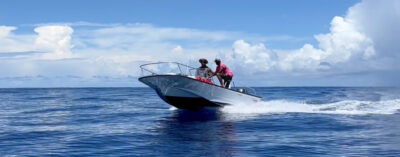
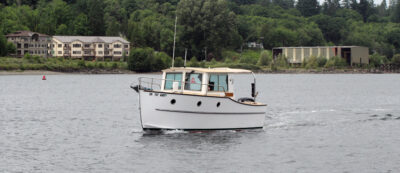
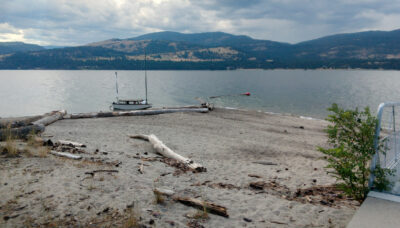
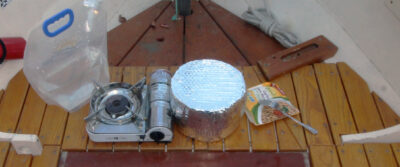
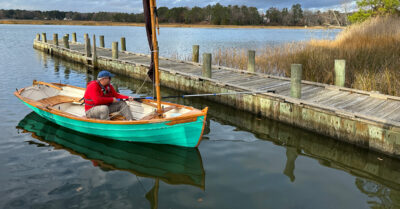
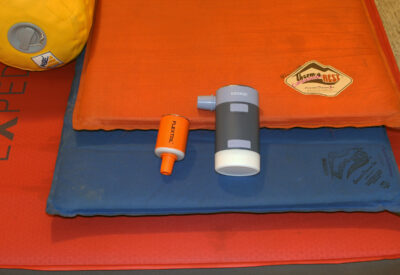

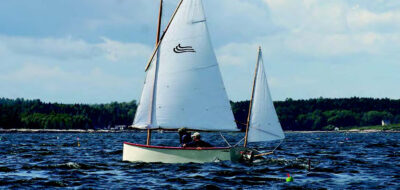

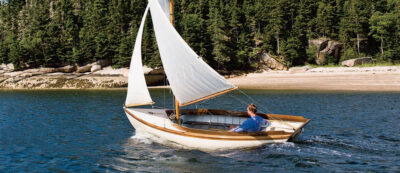
My Uncle Sam was kind enough to let me take custody of the 16’7″ models when I was running an EOD team ( Explosive Ordnance Disposal) in the Mekong in 1970. Had twin Johnrude 40’s; we had six, two on the boat, two ready to put on the boat and two being serviced. We got stainless impellers for the waterpump as I recall, and tossed the thermostats. We carried a flywheel puller and ignition parts when on the water. We pulled much of the electrical gear and relied on a very large PBR starting battery to start the motors, which could be charged at our hooch. Boat was marine-corps green, with white canvas tuck-and-rolled seats. No standing console, steering low with a radio box added. We also rigged a long, narrow 22-gallon fuel tank on either side aft of the steering bench. These could be pulled and swapped for a 5-gallon can if we needed the space for diving. We also had a 30-cal mount for show. After some months Uncle Sam sent us single 80s which were more reliable and faster than the 40s along with a little maybe 10-horse getting-home engine. I have a photo of this rig somewhere if people want to see it.
Since 1970 I have owned a 13′
Is my memory faulty, but didn’t the original Montauk, first 250 or so hulls, have a small cuddy cabin with clamshell doors on the front bulkhead? Am I confusing it with another model?
There is a Montauk rigged like that up here in midcoast Maine.
From what the owner said it was an option at the time.
Tim,
I really enjoyed your article on the Boston Whaler Montauk and the information on the evolution of hull designs. As a fish ecologist working primarily in rivers and estuaries in the northern Gulf of Mexico (now retired), I used both the 16’ and 17’ Whalers in my research and for family outings. I have always put great faith in the unsinkable hull design, but a couple of unplanned events led to real tests of the hull unsinkability.
In 1980, I upgraded from the 13’ Whaler to the 16’ Boston Whaler, purchasing it as a bare hull and then building all the interior out of mahogany. At this time my family and I were living at the University of Oklahoma Biological Station and I was doing research and recreational fishing on Lake Texoma, a large reservoir on the Texas-Oklahoma border. There, on a Saturday fishing trip with a friend, we had been trolling for Striped Bass, but decided to bottom-fish so we shut off the Chrysler motor and drift-fished about 100’ offshore from a vertical rock wall. In the distance we could see a large cabin cruiser coming directly toward us, but assumed that the skipper would soon change course, given the vertical rock wall behind us, but he did not. Because we had been trolling for several hours at low speed, the Chrysler outboard would not immediately start, and the emergency horn was not readily accessible. In a matter of seconds, we dove off the bow, diving deep to avoid propellers. The cabin cruiser, going at planing speed, hit the Whaler amidships, dislodging the console, but then sliding off the Whaler which remained afloat. We were both fine, and could rescue ourselves by getting back into our Whaler. If the Cabin Cruiser had not hit us, it would have smashed into the rock wall and the two people in the cruiser would likely have been killed.
The 16’ boat was declared a total loss and was replaced by a 17’ Montauk which served us well for research and family outings until 2005. After retiring in 2004 and moving to Colorado, we kept the Montauk at a marina on the Mississippi Gulf Coast. This all changed in late August, 2005, when Hurricane Katrina struck the Mississippi Gulf Coast, with surge approaching 28’ in the area where we kept the Whaler. The marina and many boats suffered major damage. The Whaler was in dry storage, fastened to its trailer, with the drainage plug out. For several months we didn’t know whether we still had a boat or not. When it was found, the trailer was still attached to the boat but was so damaged it was a total loss. In contrast, the Boston Whaler generally suffered only nicks in the gelcoat and the paper nautical charts in the locked center console did not show any indication of water damage. We concluded that during the storm surge the Whaler essentially floated the trailer.
I never doubted that Whalers were unsinkable, but now I’m even more of a believer; however, I don’t plan on doing any more tests of it.
I owned one of these back in the 70s. Powered with a used 70-hp Evinrude, which was really more power than it needed. I used it on Puget Sound (out of Bellingham) mainly, though one time I used it on Lake Chelan to haul dock-building poles for a pier at my parents’ lot a few miles up the lake from Manson. Didn’t carry them on the boat, but towed them for 2 or 3 miles; the road into the lot was marginal, in fact barely passable in our old pickup.
I loved the soft ride over a 1-foot chop at speed, though more than that required throttling back. My only gripe was that it was a very cold ride, even on a hot day, due to being exposed to the wind.